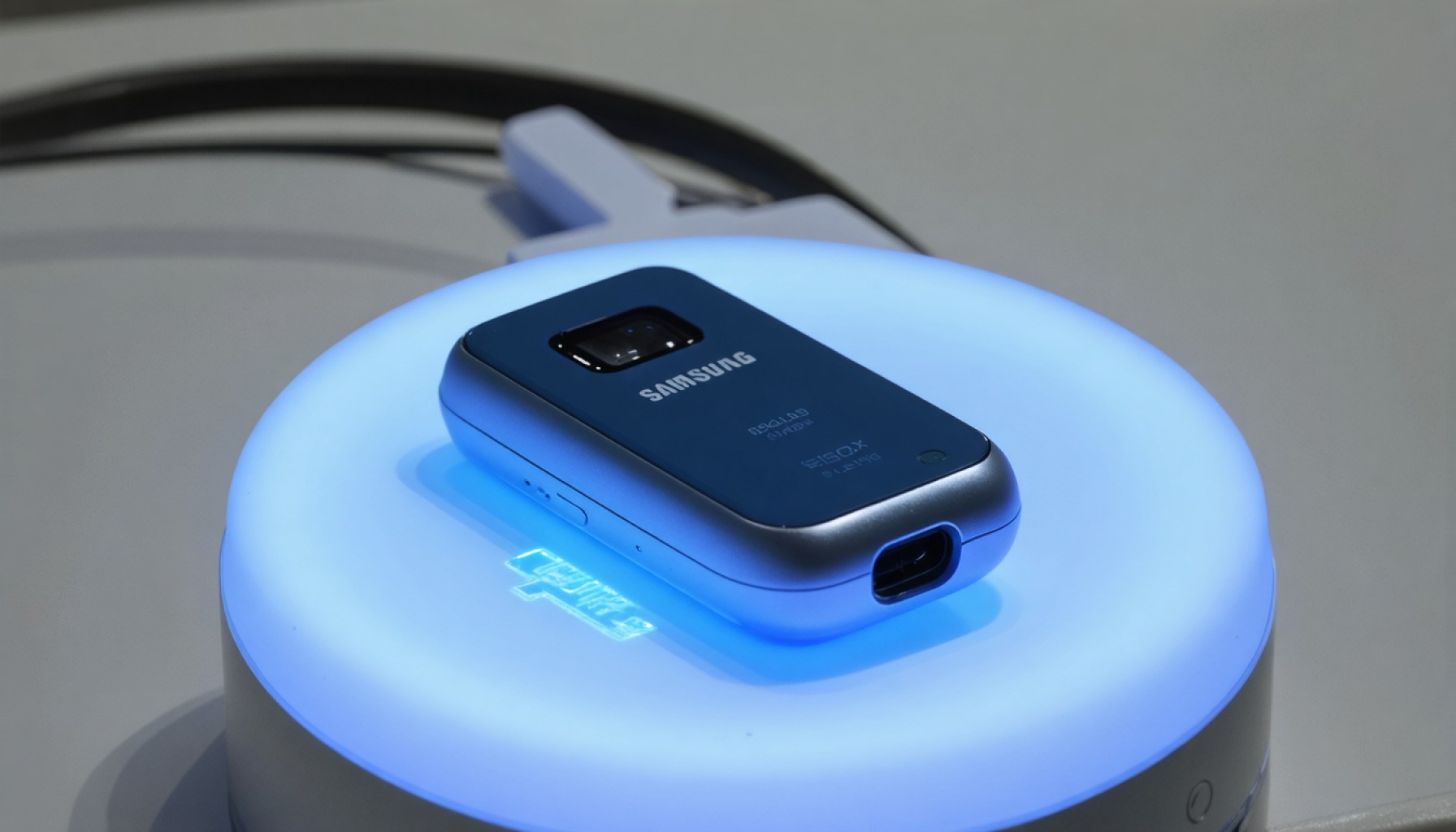- Samsung’s Galaxy Ring 2 is set to revolutionize wearables with solid-state batteries, offering more energy and safety compared to lithium-ion batteries.
- The technology promises extended battery life and faster charging, potentially reducing typical charge times significantly.
- Solid-state batteries are safer, as they lack flammable liquid electrolytes, reducing risks of accidents.
- Samsung Electro-Mechanics is working to increase energy density from 200Wh/L to 360Wh/L, enhancing efficiency and longevity.
- Initial costs are high, with Galaxy Ring 2 expected to exceed $400, reflecting the cutting-edge nature of the technology.
- Other companies, like Apple, are also exploring solid-state technology, fueling a competitive development race among tech giants.
- This innovation represents a shift toward longer-lasting, safer, and more efficient energy storage solutions in consumer technology.
Amidst a landscape of fleeting battery lives and snail-paced charging, Samsung’s forthcoming innovation promises to spark a groundbreaking shift in the world of wearables. Picture a ring—not just any ring, but a sleek, technological marvel wrapping your finger with indefatigable energy. Enter Galaxy Ring 2, poised to debut as Samsung’s first venture into the promising realm of solid-state batteries.
Imagine the energy-packed potential of solid-state batteries, offering more juice than their lithium-ion predecessors. They promise a landscape where your sleek Galaxy Ring pulsates with endurance, offering days on your finger without the habitual tethering to a charger. These batteries, devoid of flammable liquid electrolytes, are inherently safer, withstanding the test of time and temperature. Gone may be the worries of unexpected battery meltdowns or mid-day collapses.
Samsung, a connoisseur of innovation, whispers ambitions of extending this leap to its other wearables—think Galaxy Buds or even the remarkably popular Galaxy Watch. Yet, for now, the torchbearer is the Galaxy Ring, hailed to launch with this mighty fusion by year’s end. Behind Samsung’s pursuit is a steadfast alliance, with Samsung Electro-Mechanics spearheading developments in battery capacity. They aim to inflate energy density from a notable 200Wh/L to a formidable 360Wh/L, squeezing efficiency and longevity into every minuscule inch.
Now, visualize the swift elegance of charging—where a brief connection affords days untethered. The solid-state wizardry promises not only longer life but faster refuels. The buzz hints at slashing the sluggish 80-minute charge times, a godsend for the perpetually pressed for time.
However, such revolutionary progress doesn’t arrive without its price. The sophisticated construction of solid-state technology is as costly as it is cutting-edge. Enthusiasts may find themselves stretching their budgets further to don Galaxy Ring 2, a sleek intersection of style and science at an estimated price above the current $400 benchmark.
Yet, Samsung doesn’t stand alone. Rivals like Apple are steering the same course, persevering in quests to master this high-stakes alchemy of energy. Their narratives intertwine in a race not just to capture market share but to define the future landscape of consumer technology.
As solid-state batteries edge into view, the horizon is lush with possibilities. Samsung’s Galaxy Ring 2 stands not simply as a gadget, but as a harbinger of expanded freedom and autonomy in our day-to-day digital lives. This nascent technology signals a broader trend toward longer-lasting, safer, and more efficient energy storage, promising to redefine our relationship with the devices that accompany us through our waking hours.
A Game-Changer in Wearable Tech: Samsung’s Galaxy Ring 2 Revolutionizes with Solid-State Technology
An Overview of the Samsung Galaxy Ring 2
Samsung is poised to revolutionize wearable technology with the introduction of the Galaxy Ring 2, featuring solid-state battery technology that promises longer battery life, faster charging speeds, and enhanced safety over traditional lithium-ion batteries. This innovation marks Samsung’s foray into a new era of energy storage solutions in consumer electronics.
What Makes Solid-State Batteries Different?
Solid-state batteries offer several advantages over conventional lithium-ion batteries:
– Increased Energy Density: With planned energy densities expected to jump from 200Wh/L to 360Wh/L, solid-state batteries can store more energy in a smaller space.
– Enhanced Safety: These batteries eliminate flammable liquid electrolytes, reducing the risks of fires and thermal runaways.
– Longer Lifespan: With less degradation over time, solid-state batteries can significantly extend the lifespan of devices.
– Faster Charging: Quick charge times mean users spend less time tethered to an outlet.
How-To: Optimize the Use of Galaxy Ring 2
1. Familiarize Yourself with Features: Understand the various functionalities of the Galaxy Ring 2, such as health monitoring and app connectivity.
2. Maximize Battery Life: Utilize power-saving options and limit usage when necessary to optimize battery performance.
3. Leverage Quick Charging: Make use of fast charging features to minimize downtime.
Real-World Applications
– Health Monitoring: Use the ring for tracking vital signs, such as heart rate and sleep patterns.
– Convenient Transactions: Employ the built-in NFC for seamless payments.
– Connectivity: Sync with other Samsung devices like Galaxy Buds and Galaxy Watch for an integrated ecosystem experience.
Market Trends and Predictions
The wearable tech market is expected to expand rapidly with the adoption of solid-state batteries.:
– Increased Demand: With longer battery life and enhanced safety, consumers will likely gravitate toward devices that incorporate solid-state technology.
– Competitive Landscape: Competitors like Apple are also exploring solid-state batteries, indicating an industry-wide shift.
Pros and Cons
Pros:
– Superior battery performance and lifespan
– Safer structure without liquid electrolytes
– Quicker charging times
Cons:
– Potential high initial cost
– Anticipated complex manufacturing process
Pricing Concerns
The cutting-edge technology of solid-state batteries means the Galaxy Ring 2 may come with a premium price, potentially exceeding the $400 mark.
Conclusion: Actionable Tips
– Stay Informed: Keep an eye on Samsung’s updates for official launch details and pricing.
– Evaluate Needs: Determine how the Galaxy Ring 2’s features align with your lifestyle.
– Budget Accordingly: Prepare for a higher price point due to advanced technology.
For additional updates on Samsung’s innovations, visit the Samsung website. Stay ahead in the world of wearables by understanding transformative technologies like solid-state batteries that set the pace for future tech advancements.
